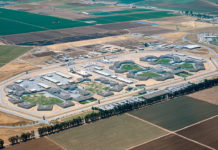
The Centers for Disease Control and Prevention on Tuesday formally endorsed the Pfizer-BioNTech coronavirus vaccine for children aged 5 through 11, a move that will buttress defenses against a possible surge as winter arrives and ease the worries of tens of millions of pandemic-weary parents.
At a meeting earlier in the day, a panel of scientific advisers had unanimously recommended that the vaccine be given to these children. Inoculations could begin as soon as this week.
“Together, with science leading the charge, we have taken another important step forward in our nation’s fight against the virus that causes COVID-19,” Dr. Rochelle Walensky, director of the CDC, said in a statement Tuesday night.
The CDC panel’s endorsement arrives just as Americans prepare for a potentially risky holiday season. Cases in the United States have fallen steadily for weeks, but experts have warned that indoor gatherings may send the rates soaring again. Many Americans seem determined to celebrate; already airlines are bracing for what may be the busiest travel season since the start of the pandemic.
While relatively few of the 29 million children in this age group will be fully immunized a month from now, even partial vaccination will provide some protection against the coronavirus. Every million doses given to children ages 5 to 11 would prevent about 58,000 cases and 226 hospitalizations in that group, according to the CDC.
Immunizing these children is expected to prevent about 600,000 new cases from November 2021 to March 2022. And rising immunity may reduce the chances that young children will transmit the virus to vulnerable adults in their families and communities, health officials noted.
Vaccinations of younger children are likely to help keep schools open. Virus outbreaks forced about 2,300 schools to close between early August and October, affecting more than 1.2 million students, according to data presented at the committee meeting.
The pandemic has also stalled routine immunizations, widened education gaps and escalated rates of anxiety and depression among children. “Vaccination of children ages 5 to 11 years will not only help prevent COVID-19 infection and serious consequences of infection in this age group, but will also help children emotionally and socially,” said Dr. Pamela Rockwell, who represents the American Academy of Family Physicians on the CDC panel.
Still, about 3 in 10 parents say they will definitely not get the vaccine for their 5- to 11-year-old child, according to the most recent poll by the Kaiser Family Foundation. Only about 3 in 10 parents said they would immunize their child “right away,” a percentage that has barely budged since similar polls in July and September.
Many other parents are eager to see their children vaccinated as quickly as possible. Anticipating the CDC’s decision, the Biden administration has enlisted more than 20,000 pediatricians, family doctors and pharmacies to administer the shots. About 15 million doses are already being shipped to vaccination sites across the country, federal officials said Monday.
Children ages 5 to 11 will receive one-third of the dose authorized for those 12 and older, and the vaccine will be delivered with smaller needles and packaged in smaller vials to avoid a mix-up with adult doses.
About half of the parents in the Kaiser poll said they worried about mandates that would force them to inoculate their children. Schools in all 50 states already require certain vaccines, but those have full approvals from the FDA. COVID vaccines for children have only been given emergency authorizations thus far.
California this month became the first state to say it would require children who attend public and private schools in the state to be immunized as early as next fall — but only after the vaccine is fully approved by the FDA. Even in states with mandates, some students may be able to opt out by citing medical reasons or religious beliefs.
Before they met, advisers to the FDA and the CDC were bombarded by thousands of emails offering misinformation about the vaccine and asking the experts to vote against it.
One common objection holds that because children rarely get sick from the virus, the vaccine’s potential harms may outweigh its benefits. But the risk to children is not zero, CDC scientists noted at the meeting.
Since the beginning of the pandemic, more than 8,300 children ages 5 to 11 have been hospitalized with COVID, and at least 94 have died. About one-third of the hospitalized children were sick enough to be admitted to intensive care units.
Almost 10% of children with mild symptoms may have lingering problems months after the infection has resolved. And at least 2,300 children ages 5 to 11 have developed a condition called multisystem inflammatory syndrome following infection.
The CDC’s advisers also evaluated data on the vaccine’s risks. There was enough information to conclude that the benefits of the vaccine outweighed the risks, even without more long-term safety data, said Dr. Matthew Daley, a senior investigator at Kaiser Permanente Colorado.
“If we wait, we miss the chance to prevent many cases of COVID-19 in this age group, and that includes some very severe cases,” he said.
In a clinical trial of the vaccine in children, Pfizer initially tested the full adult dose and two smaller doses. The company settled on the smallest — one-third of the adult dose — because it had the fewest side effects and yet produced at least as many antibodies as observed in young adults who had been given the larger dose.
The vaccine had an efficacy of more than 90% in children ages 5 through 11, according to Dr. Alejandra Gurtman, a vice president at Pfizer, who presented the data at the meeting. Some children experienced fever, headache and fatigue, the same side effects seen in the older groups.
The FDA had asked Pfizer-BioNTech and Moderna to expand the size of their pediatric trials in order to detect less common side effects of the vaccines. Even so, the Pfizer-BioNTech trial was not large enough to detect rare adverse events.
Experts on the CDC panel spent some time deliberating a rare side effect of vaccination called myocarditis, an inflammation of the heart muscle. The risk is highest in males ages 16-29, but even in that group, a majority recover quickly.
The risk appears to decline in children 12-15, and is expected to be even lower in younger children, experts said at the meeting. COVID itself is far more likely to cause myocarditis, and a more severe version of it, studies have shown.
The CDC has not definitively linked any deaths from myocarditis to vaccination, said Dr. Matthew Oster, a CDC scientist who presented myocarditis data at the meeting. “Getting COVID, I think, is much riskier to the heart than this vaccine, no matter what age or sex,” Oster said.
Given the millions of Americans who are still unvaccinated, immunizing younger children is unlikely to bring the country to the “herd immunity” threshold — the point at which virus transmission stalls. Still, vaccinating children may help to curtail virus spread by giving the virus fewer entryways into the community.
And it may help to protect people who don’t respond well to the vaccine, such as organ transplant recipients, cancer patients and others with impaired immune responses.
“Too many children have either lost a parent or become orphaned in this pandemic, which is incredibly tragic,” said Dr. Camille Kotton, who cares for immunocompromised people at Massachusetts General Hospital.
Results from the Pfizer vaccine’s trial in children under age 5 are not expected until the end of this year at the earliest. Last week, Moderna said its vaccine produced a potent immune response in children ages 6 through 11 who received half the adult dose.
Moderna requested authorization from the FDA for use of its vaccine in children ages 12 to 17 in June. The FDA has not yet made a decision on that application, and is reviewing reports linking the vaccine to myocarditis, the company said Sunday.
This article originally appeared in The New York Times.
Copyright 2021 The New York Times Company













